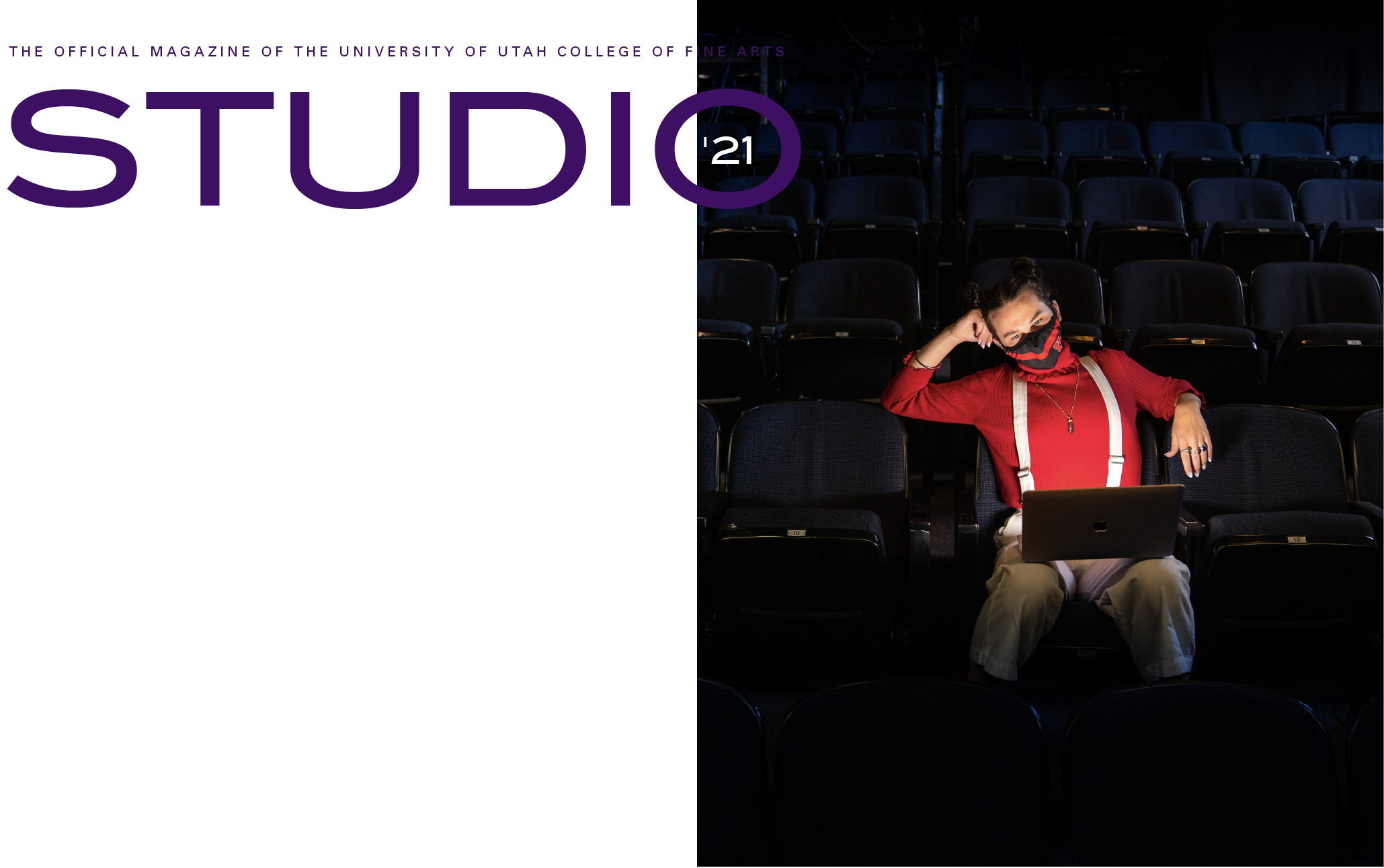
Photo: Photo: Dave Titensor of University Marketing & Communications
Theatre Lighting: Halee Rasmussen
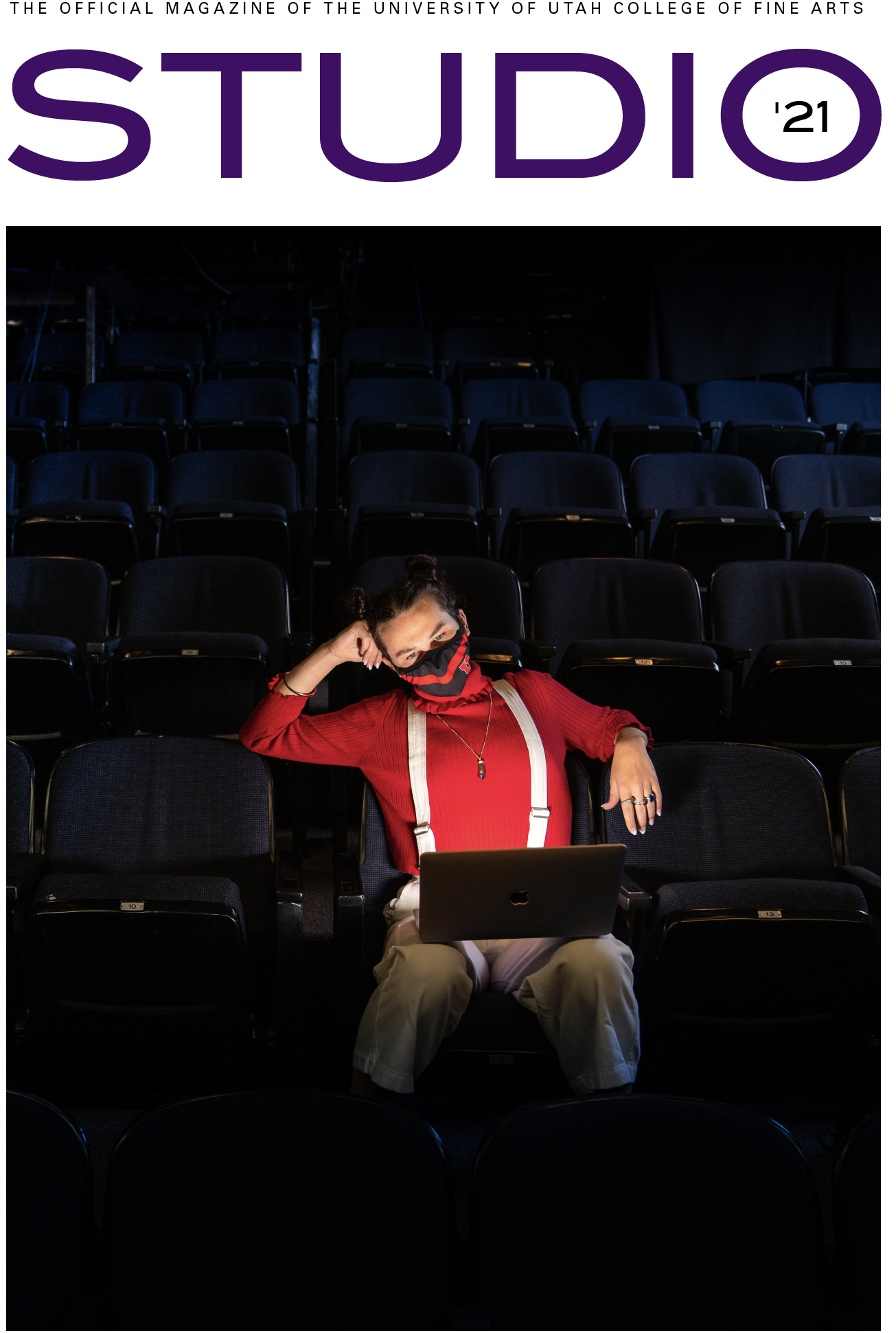
Photo: Dave Titensor of University Marketing & Communications
Theatre lighting: Halee Rasmussen
ON THE COVER /
Musical Theatre student Trey Pullen sits alone in the Babcock Theatre, a space usually filled to capacity with audiences that include students,
friends and family of students, donors, and the community at large. Pullen, like the rest of our audiences this year, accessed performances virtually, often alone, but together in the separateness.
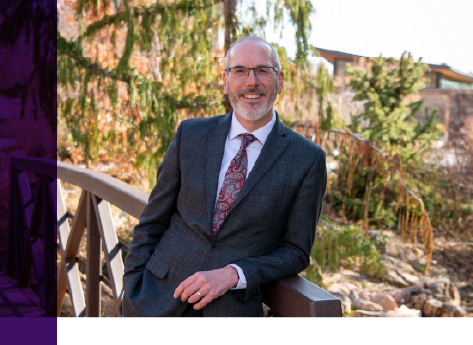
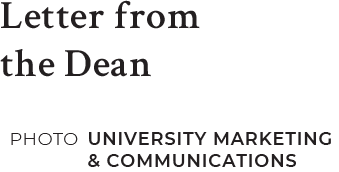
If it were not for life in the years 2020 and 2021, I don’t know that I would otherwise find myself drawing similarities between the practices of art-making and the art of education during national and global crises. At first blush, the two arguably seem like unrelated efforts.
But witnessing the swift, responsive thoughtfulness of our faculty, staff, and students to the mighty influences of this last year has illuminated the striking commonalities between these endeavors. So much of the artistic enterprise — the creative process — was reflected in the ways we pivoted from traditional modes of teaching and learning to the new ones the pandemic and social unrest required.
We had originally set out with an idea of what we wanted to manifest; our work of art was rigorous, immersive education that allows students to find their voices, fuel their passions, and ignite their futures. As artists familiar with malleable materials, bodies, spaces, sound and light, we are accustomed to the constant adjustments it takes to respond to the whims of external elements. COVID-19, however, tested our abilities, our patience, and our resolve to shift and adapt.
And we rose to the occasion.
The process, though oftentimes very trying, has been awe-inspiring for me to witness. And the product, as you will see examples of in this magazine, is a collection of unique masterpieces.
I knew to expect creativity, but I could never have ever imagined this breadth and depth of innovative genius. I hope you find it equally as inspiring.
Thank you, as always, for being part of our College of Fine Arts family. ■


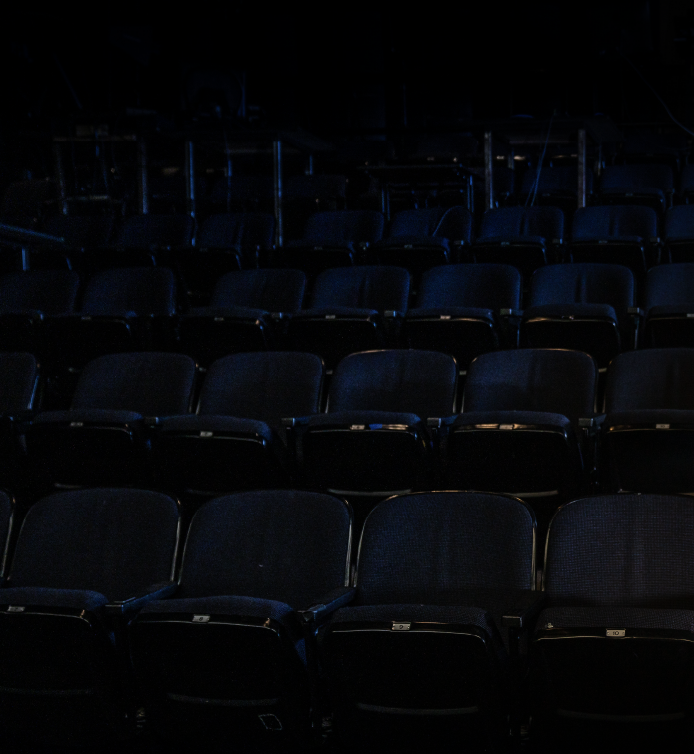

The Department of Theatre’s 2020/2021 season became affectionately known as “Distanced but Not Distant.” While the theatres were dark and the bulk of instruction, rehearsing, and performing happened elsewhere, the theatre community dug deep to find new and innovative ways to make and share their work and provide connection.
When they originally selected their shows, they did so expecting to present them live and in-person. When circumstances changed, priorities shifted, and so did the season to meet them. But the separation has confirmed the truth we have long known: what matters is connection — the company we keep, and the care we take of one another.
As the department navigated the smaller, safer season, their excitement about new genres and technology was surpassed by their resolve. As their coronavirus response now enters a new chapter, they are still reckoning with the global pandemic of racial discrimination and systemic inequality.
We have all learned so much, both from the journey and from our traveling companions. Thank you, now and always, for the gift of your company.











